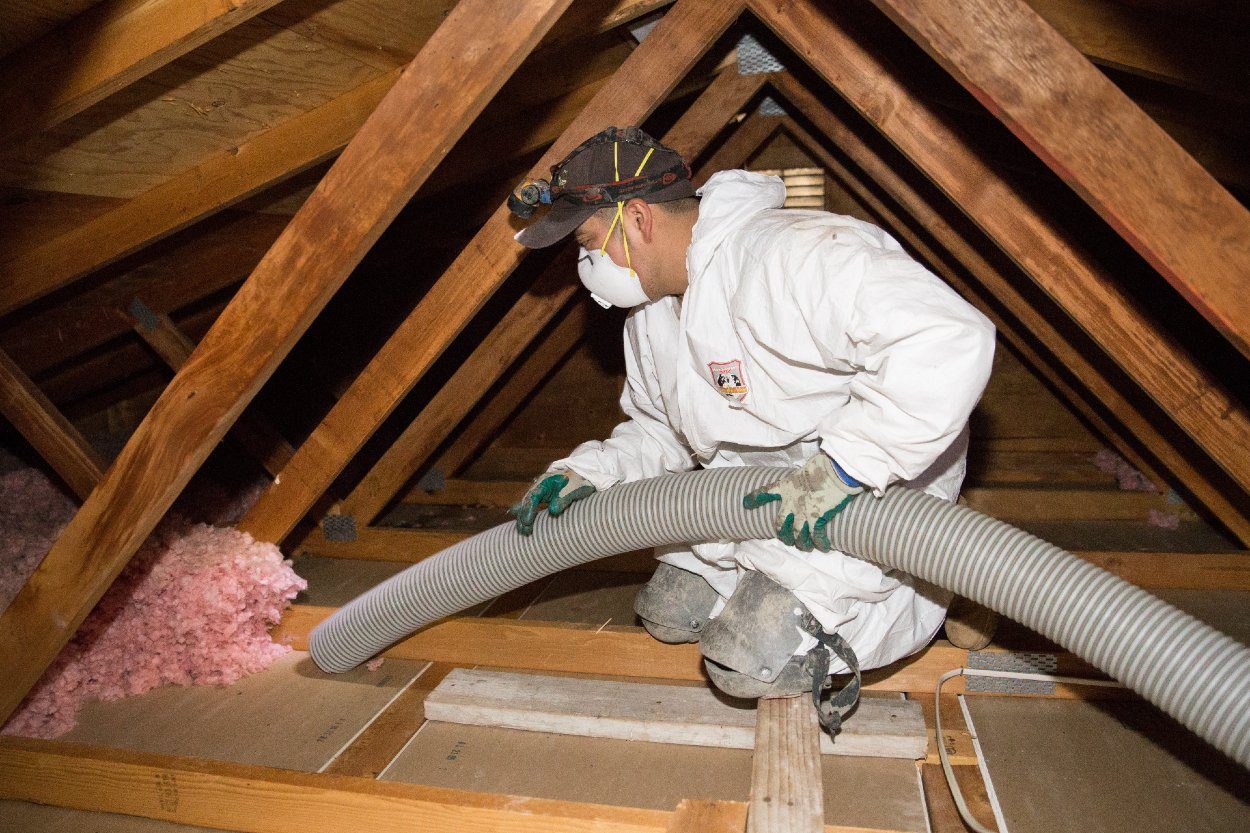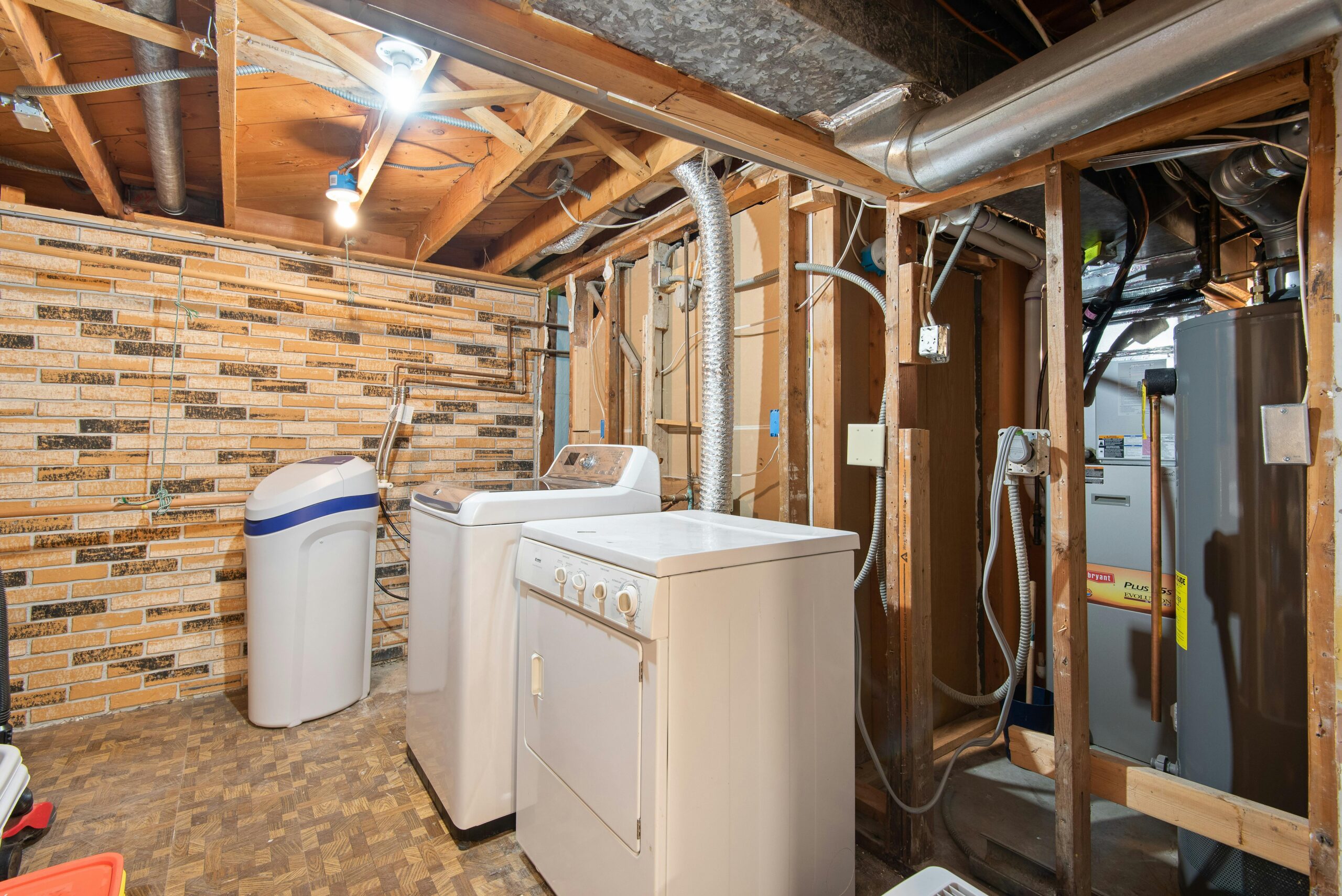Did you know that attic insulation along with other times of house insulation can lower your energy bill? The EPA reports that homeowners can save an average of 15% on heating and cooling costs with effective insulation. Attic cleanouts are a great place to start if you are looking into the benefits and costs of attic insulation.
While budgeting your attic insulation costs, we urge you to consider investing in an attic cleanout before the insulation installation itself. An attic cleanout involves removing debris from the space, as well as any existing insulation — often old, damaged, and dirty. Though it’s pretty intuitive for the two services to go together, there’s a misconception out there that blowing new insulation over the existing insulation will do the trick; the team at Crawl Pros begs to differ.
Without an attic cleanout, you may risk a variety of problems, including rodent and insect infestation, deteriorating structure, poor energy efficiency, and mold. Read on to find out more about attic cleaning, attic insulation installation, and more factors to consider while budgeting for an attic insulation project.
Attic Insulation Cost Consideration #1: The Condition of Your Existing Insulation
The value of an attic cleanout lies not only in cleaning and junk removal but also in the inspection (and removal, if necessary) of your attic’s existing insulation. How effective your insulation is often depends on when your home was built and the type of insulation (and how much insulation) is present. One thing to note is the R-value, which measures the ability to prevent the transfer of heat; the larger the number, the less heat is lost due to efficient and effective insulation. Through the 1970s, attics sat around an R-19 value, moving up to an R-38 value in the 1990s, and by 2011, the standard was R-49. That’s a lot of change in 40 years!
During an attic cleanout, one of the first steps is assessing your insulation to see if it is up to code for full energy savings potential.
There are several different types of insulation to look out for in your attic, which we’ve listed below.
Types of Attic Insulation
- Vermiculite
- Balsamic Wool
- Rock Wool
- Cellulose
- Fiberglass
Several of these types of attic insulation will need to be removed because of health hazards or safety issues. Vermiculite, for example, can contain asbestos, while balsamic wool (made of shavings from cedar trees, and popular from the 1950s–1970s) can contain carcinogens proven to pose health issues. Cellulose, which is made from recycled newspaper, can be a fire hazard depending on its age. Oftentimes during attic cleanouts, we discover that about 90% of insulation needs to be removed — not just because of the above dangers, but also because the insulation may be dirty, worn out, or home to pest waste.
So why have your attic cleaned and inspected? As mentioned, a big reason is to identify issues with your attic insulation and remove them if necessary. Depending on the age of your home, your attic could have any of the problematic insulation listed above or even a combination of several from home updates over time. Even without any of the problematic insulation types, blown-in insulation can become compromised and need to be replaced over time, especially if it’s 30+ years old. If there is not an even blanket across, consisting of 14–18 inches of product, it will need to be replaced. It will also need to be replaced if your insulation is contaminated by pests or dirt.
Attic Insulation Cost Consideration #2: Steps in an Attic Cleanout
Now that you know why you might need attic cleaning, let’s talk about what an attic cleaning entails. Understanding each step in the process, and which steps will apply to your unique attic, will ultimately help you budget your attic insulation costs. Crawl Pros’ process for attic cleanouts includes the following steps:
- Remove debris
- Remove & remediate mold, if any
- Remove insulation (Learn more!)
- Air seal the attic
- Install proper venting
- Proof for pests
- Blow in new insulation
The first step in our attic cleanouts is removing any debris or junk from the attic, and clearing the space for future insulation work if necessary. Debris includes anything from rotted wood to small rodent carcasses to pollen and dirt. Finding and removing these waste materials will not only improve the air quality of your home, but it will also inform us of other issues in your attics, such as a pest infestation, mold, or ineffective/damaged insulation.
Next, the area will be inspected for mold. If mold is found, your Crawl Pros expert will identify why there is mold in the first place — possibly from a leaky roof or, through the stack effect, crawl space flooding. Next, they will soda blast all mold and spray with a primer, so mold can’t regrow. Our primer comes with a 10-year warranty to guarantee a mold-free space. If you suspect mold in your attic for any reason, budget for greater attic insulation costs.
Next, we remove insulation if necessary. The process of removing your insulation will depend on how many different types of insulation are present. Typically, a 6-inch hose will run up into your attic to vacuum out the insulation and waste product, pushing the materials into a machine that shreds the old insulation. The vacuum machines outside in the truck are professional grade; trying to remove insulation as a DIY project with a ShopVac, for example, will result in a lot of frustration on your end as the ShopVac will clog almost immediately. Another method of removal is by hand; this is usually done for batt insulation, a type of insulation stored in rolls and made of fiberglass. Interested in learning more? Check out A Fool Proof Formula For Easy Attic Insulation Removal.
Fourth on our list is air-sealing the attic. This part of attic cleaning involves placing a bead of silicone caulk across the top plate and spraying expanding foam anywhere there may be a penetration point, including electrical wires.
Installing proper venting is the next step in attic cleaning. Venting is determined by building code (cubic ft by vents), and your expert will baffle the vents, which allows for airflow once the insulation is installed.
Next comes rodent proofing to ensure rodents, birds, and other pests can’t get in the attic. Learn more about our process for rodent removal and exclusion.
The final step in attic cleaning is blowing in new cellulose insulation. We use this insulation because it can’t be “fluffed up,” which other insulators will do when blowing in new insulation (usually fiberglass) to skimp on costs and make an attic look properly insulated. Cellulose is an excellent air-blocker, meaning it has a higher R-value and is less likely to be contaminated by dirt and dust from the wind. At Crawl Pros, we pride ourselves on using higher quality cellulose insulation. Many providers use cellulose insulation with 80% alum nitrate/sulfate and 20% borate because it is the cheapest option. Alum nitrate/sulfate, however, has been linked to a variety of health issues. In contrast, Crawl Pros uses 100% borate insulation, though more expensive, to prioritize our customers’ safety.
Other Factors to Consider & Attic Insulation Cost Estimates
All of this sounds like a lot of work, and that means it’s expensive, right? Not necessarily! Though, we’ll admit it’s a little difficult to give you exact costs because there are so many factors at play. Factors that impact attic cleaning costs include:
- How much debris needs to be sucked up
- The accessibility of the attic, and/or how far the attic access is from our truck
- Square footage of the attic
- How much prep work is required
- The presence of mold
With all factors considered, the average attic junk and insulation removal costs around $1.50–$3 per square foot. If there’s mold present, however, costs lean toward the top of that range or over — approximately $4.5–$6 per square foot. Refer to the above factors and estimated prices as you consider whether or not your home could benefit from an attic cleanout and insulation inspection.
Again, it’s difficult to give an exact cost quote without seeing your unique space, and the estimates above are in no way a commitment. To get an accurate estimate of what attic cleaning will cost in your home, book a free consultation today.
Attic Insulation Cost: Is An Attic Cleanout Worth It?
Just blowing new insulation in over your existing insulation is a bad idea. A preemptive attic cleanout and insulation removal will save you from potential dangers, including rodent and insect infestation, deteriorating structure, poor air quality, and mold. Determining if an attic cleaning is worth the cost is entirely up to you, but — in our completely biased opinions — the benefits to your family and home are indeed worth it.
Crawl Pros: Local Attic Insulation Experts
Our estimators will arrange a set time to arrive at your home, conduct a corner-to-corner inspection, then present their findings, recommendations, and cost estimate to you in the comfort of your own home.
Crawl Pros serves the greater Seattle, Washington area, the greater Portland, Oregon area, and Boise, Idaho. If you are interested in learning more about attic insulation costs or need an attic cleanout – contact the technicians at Crawl Pros for a free estimate today.



